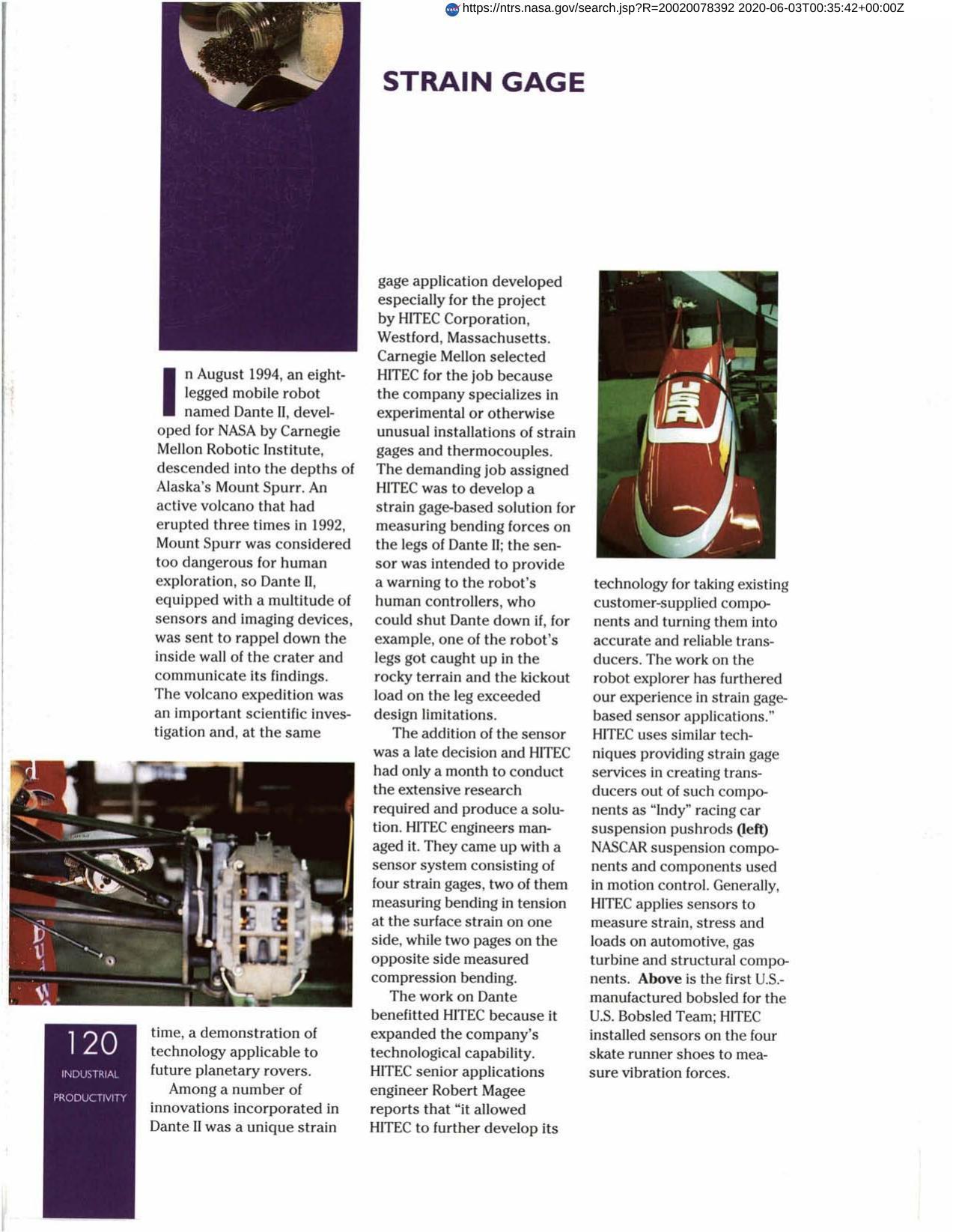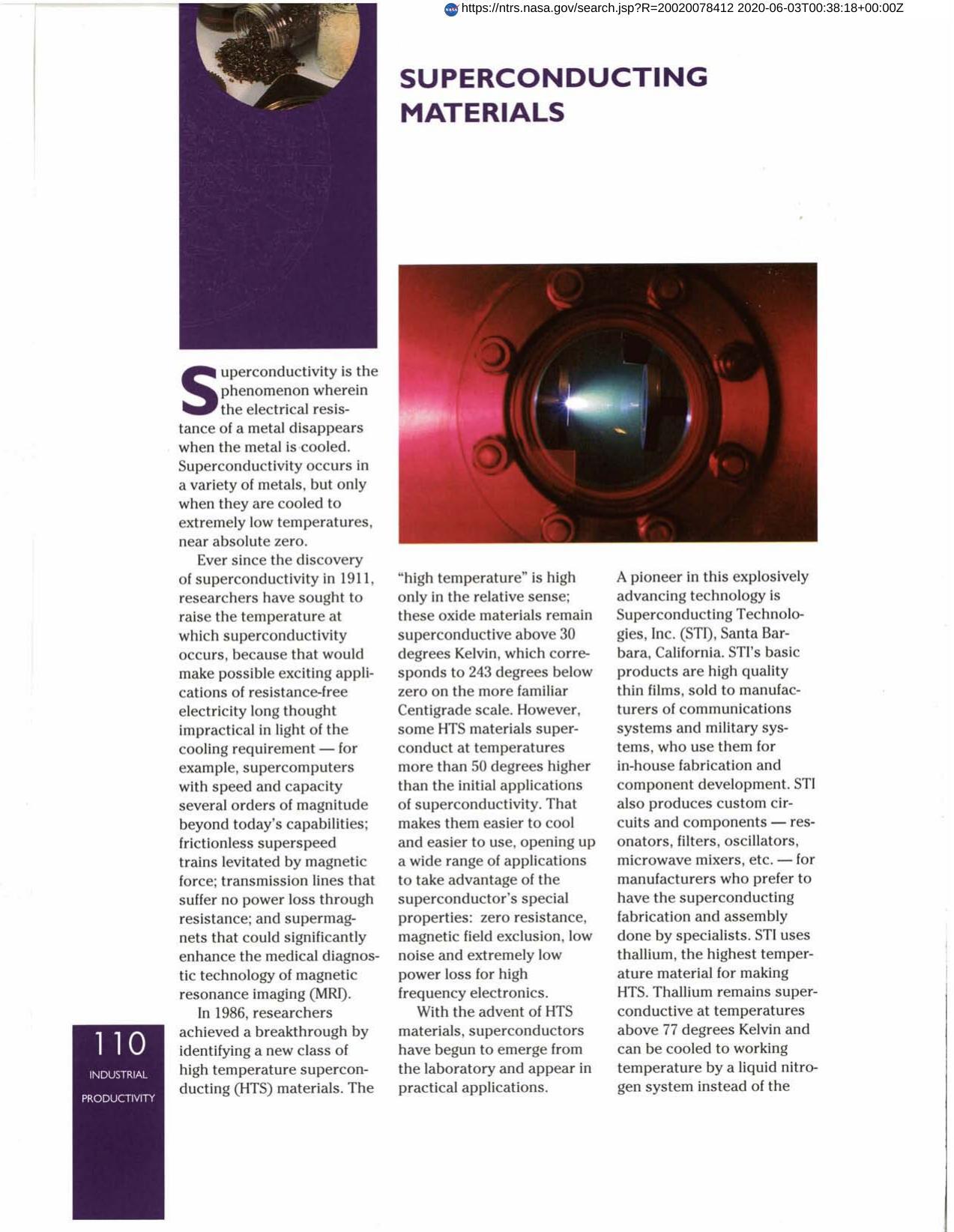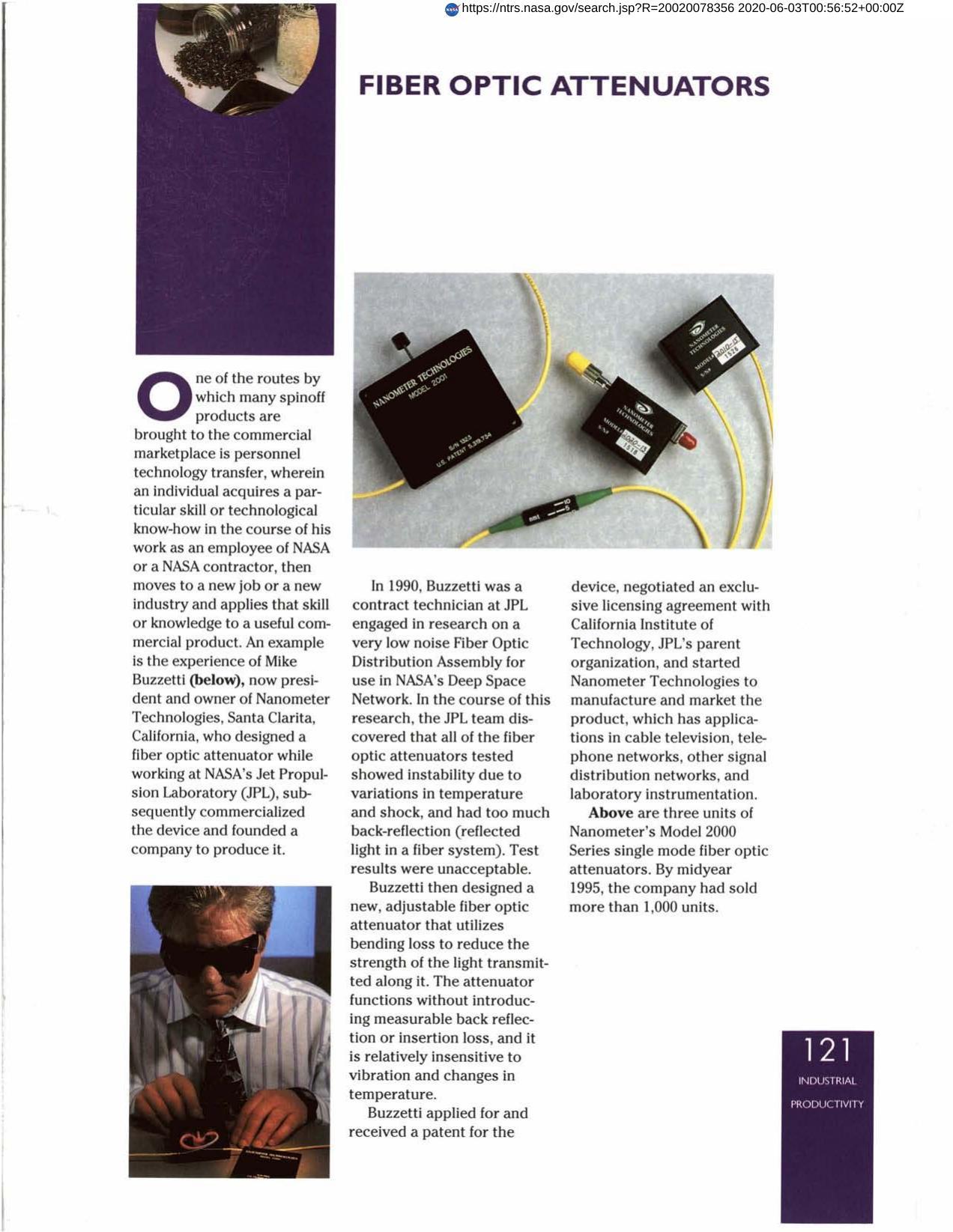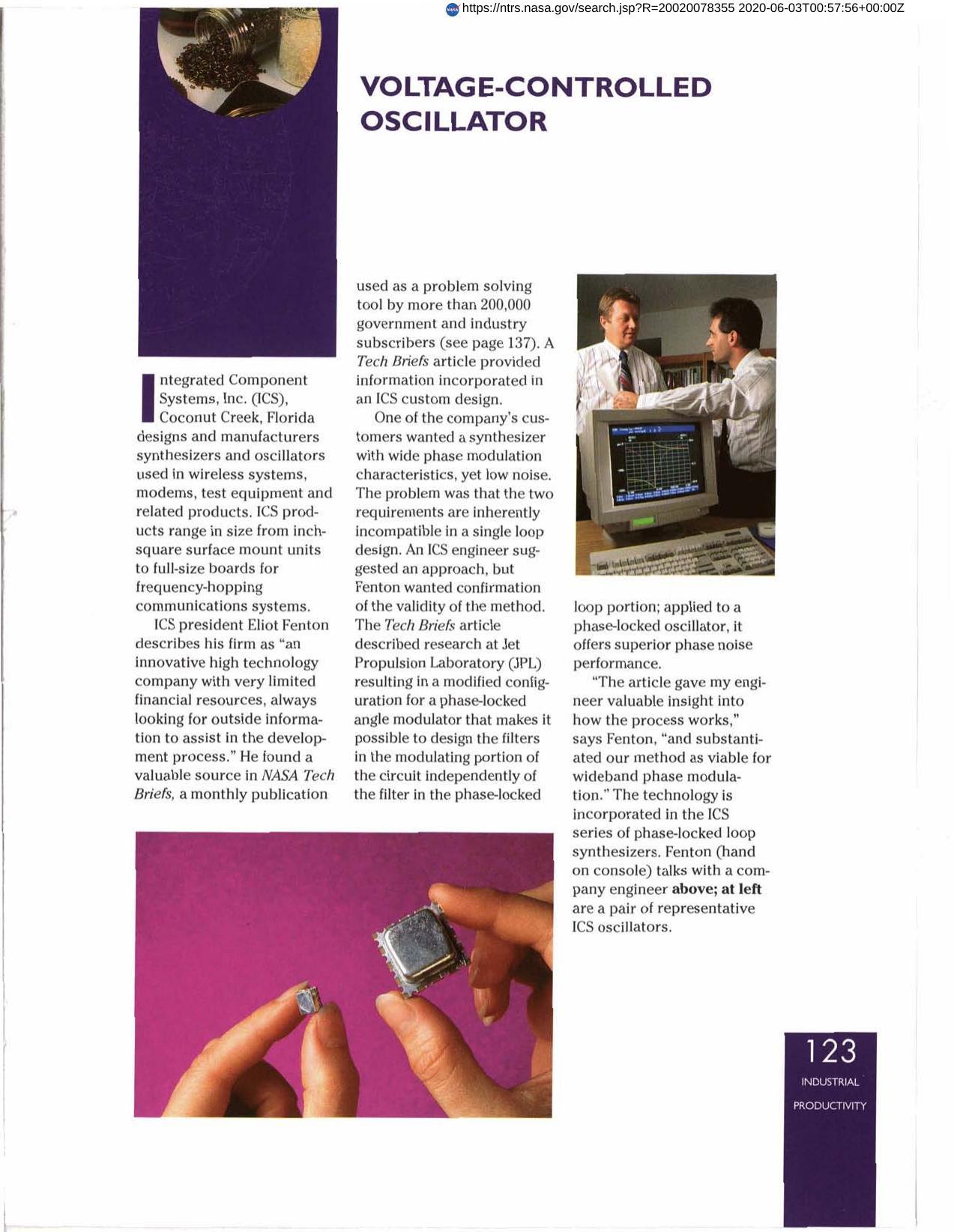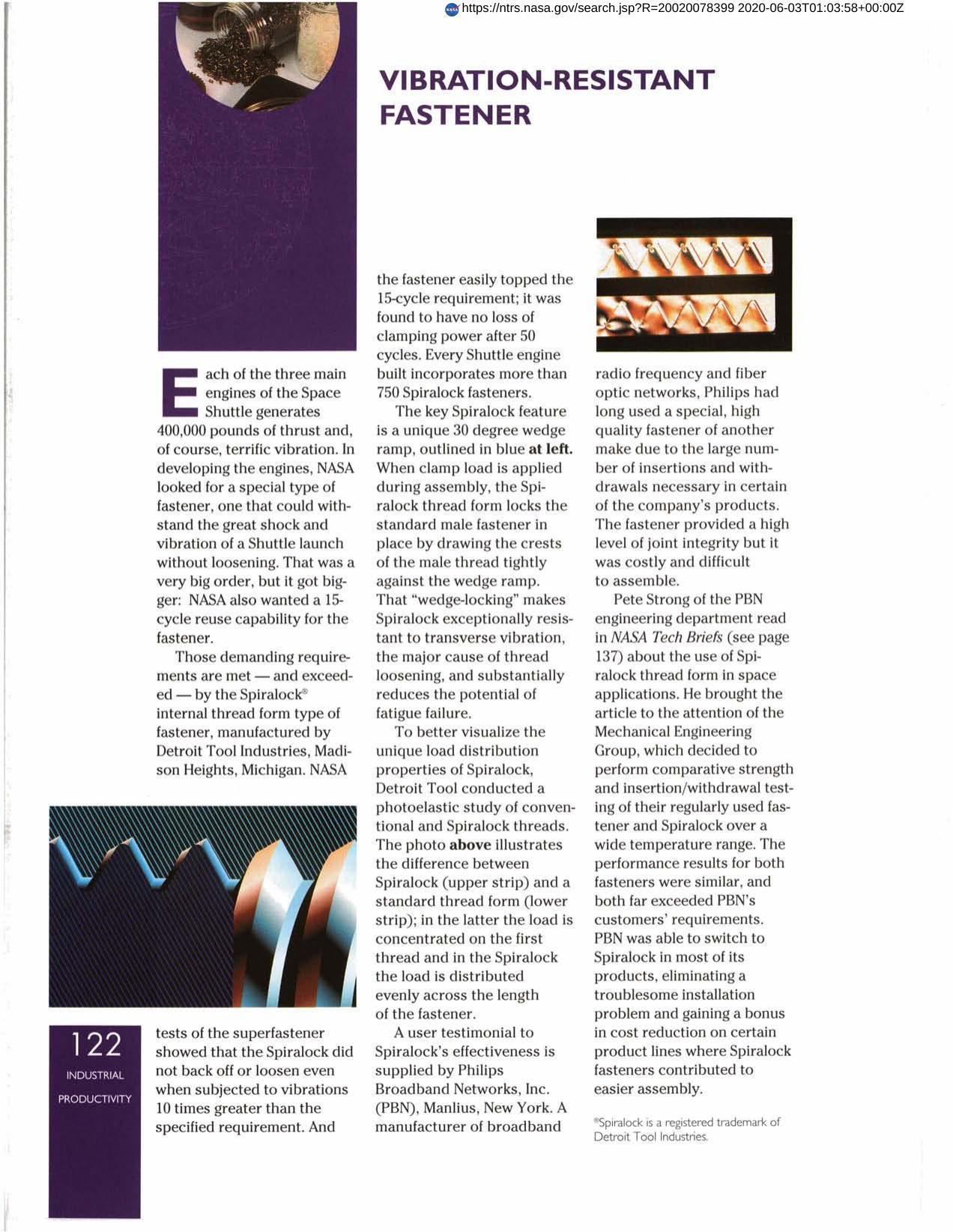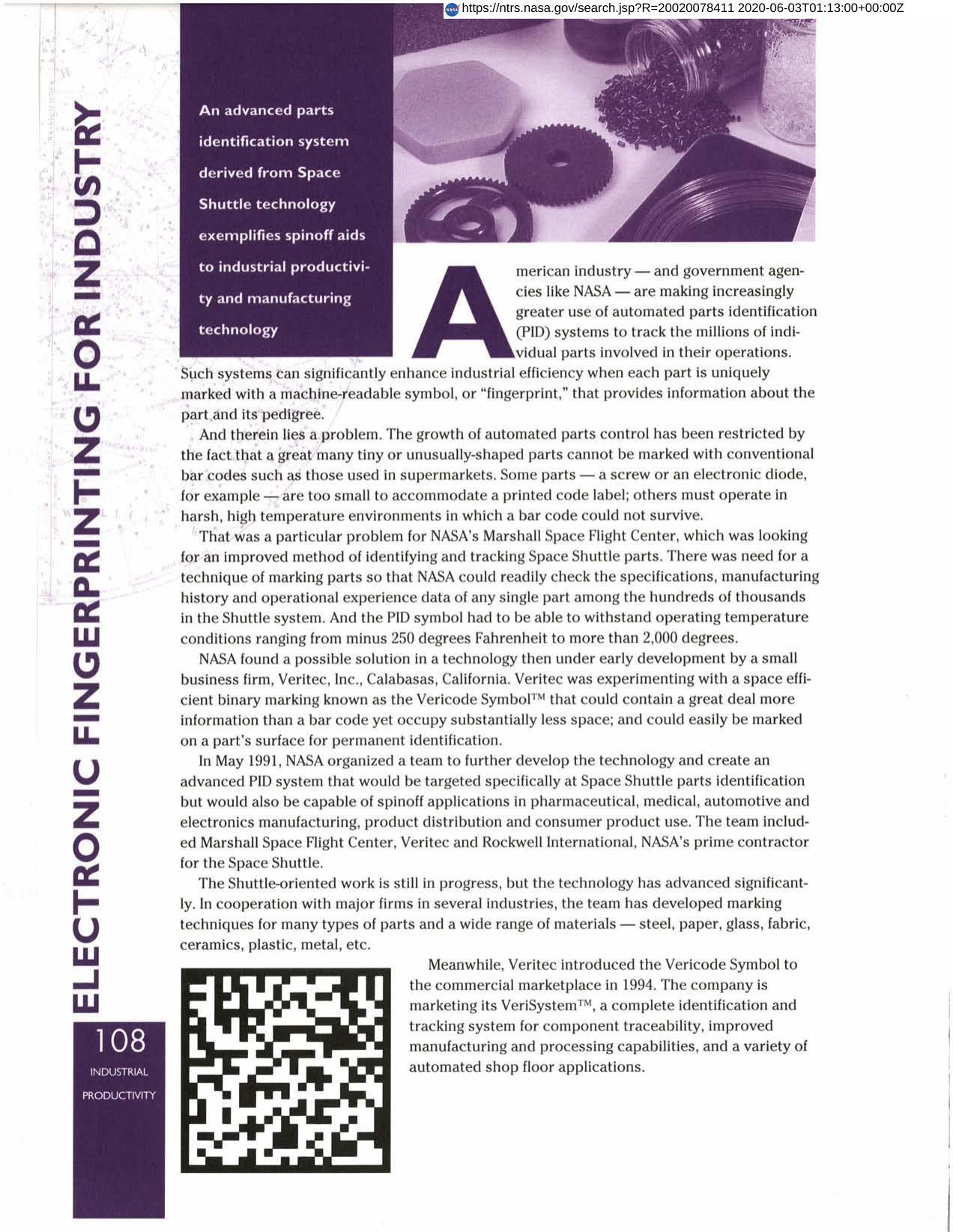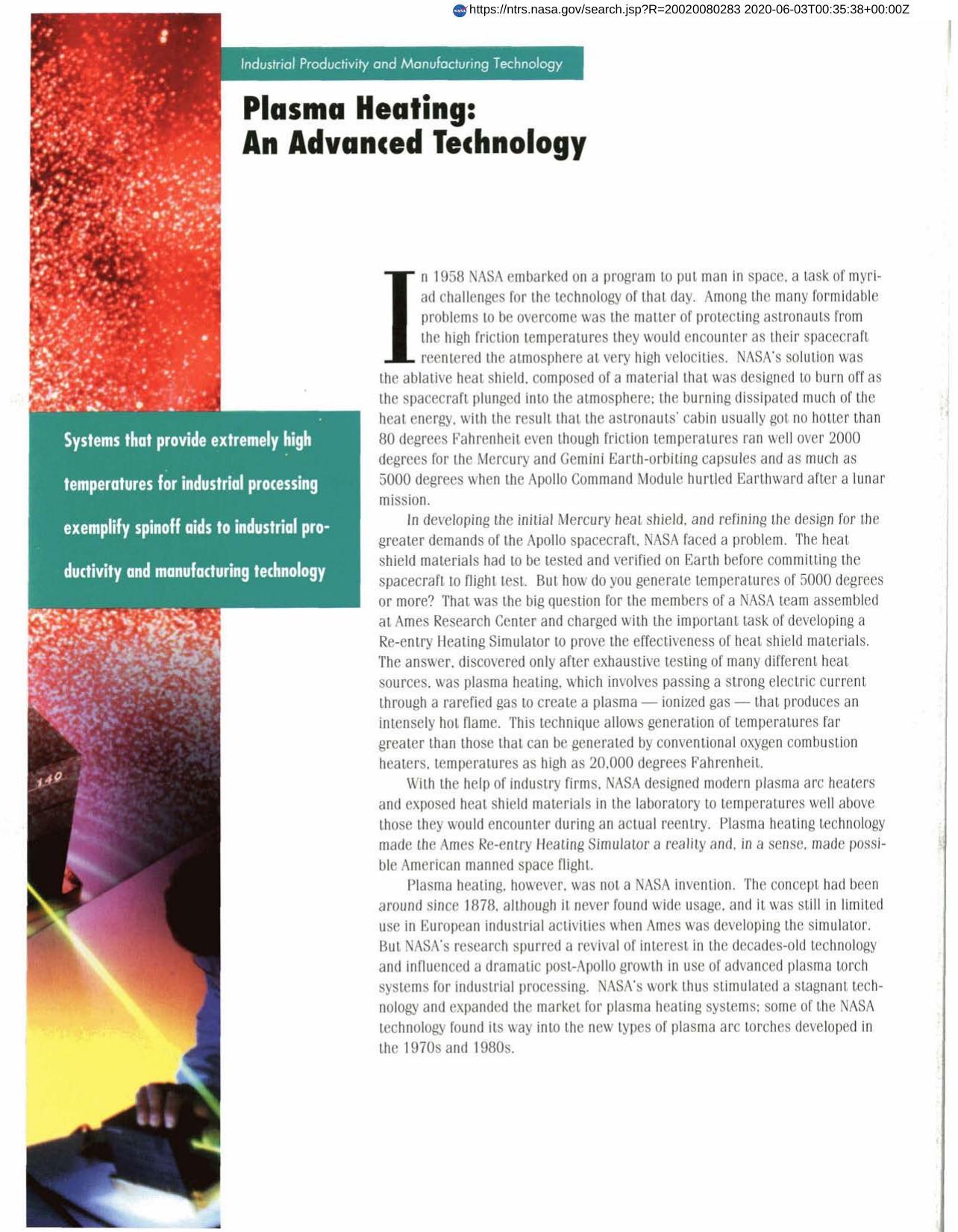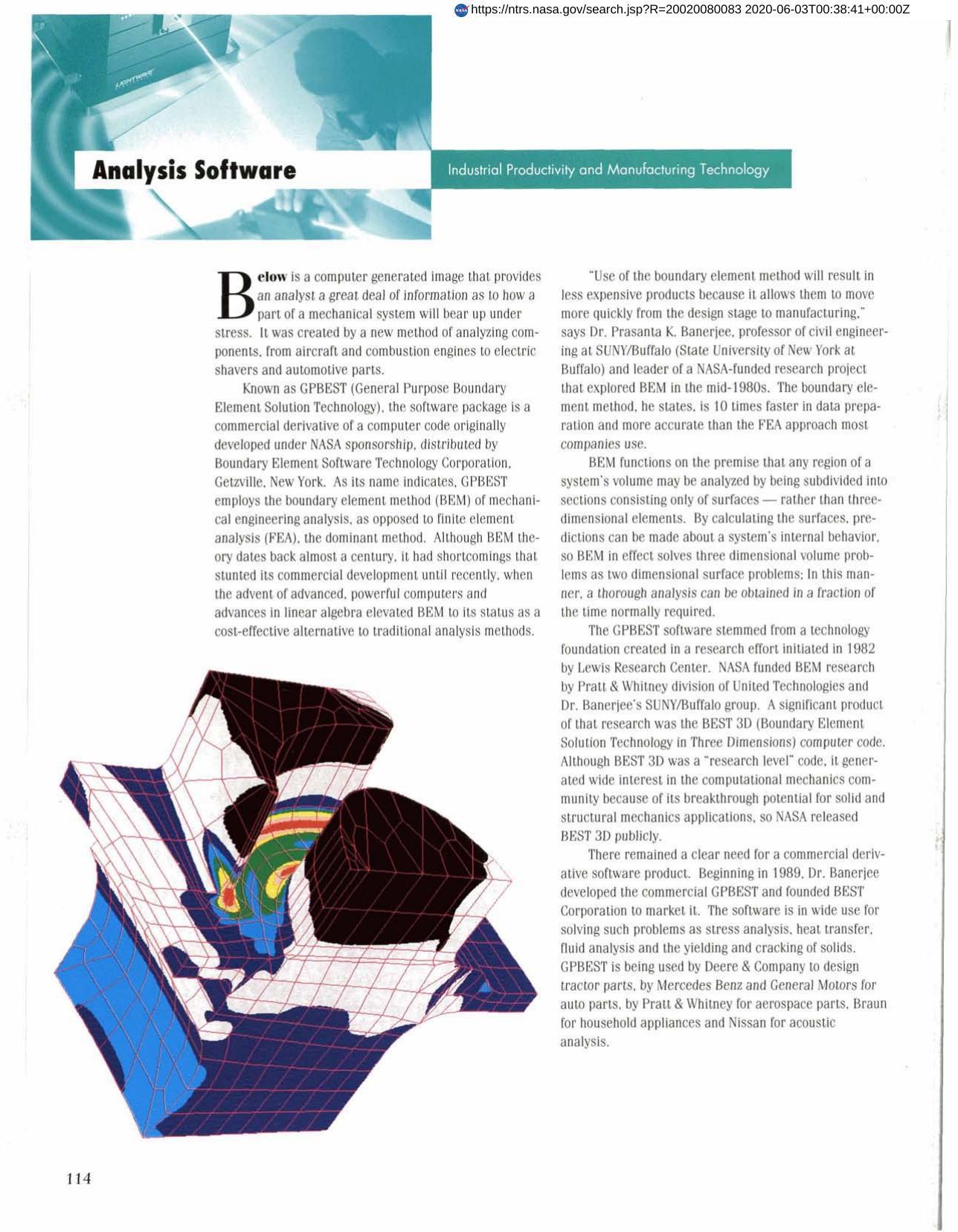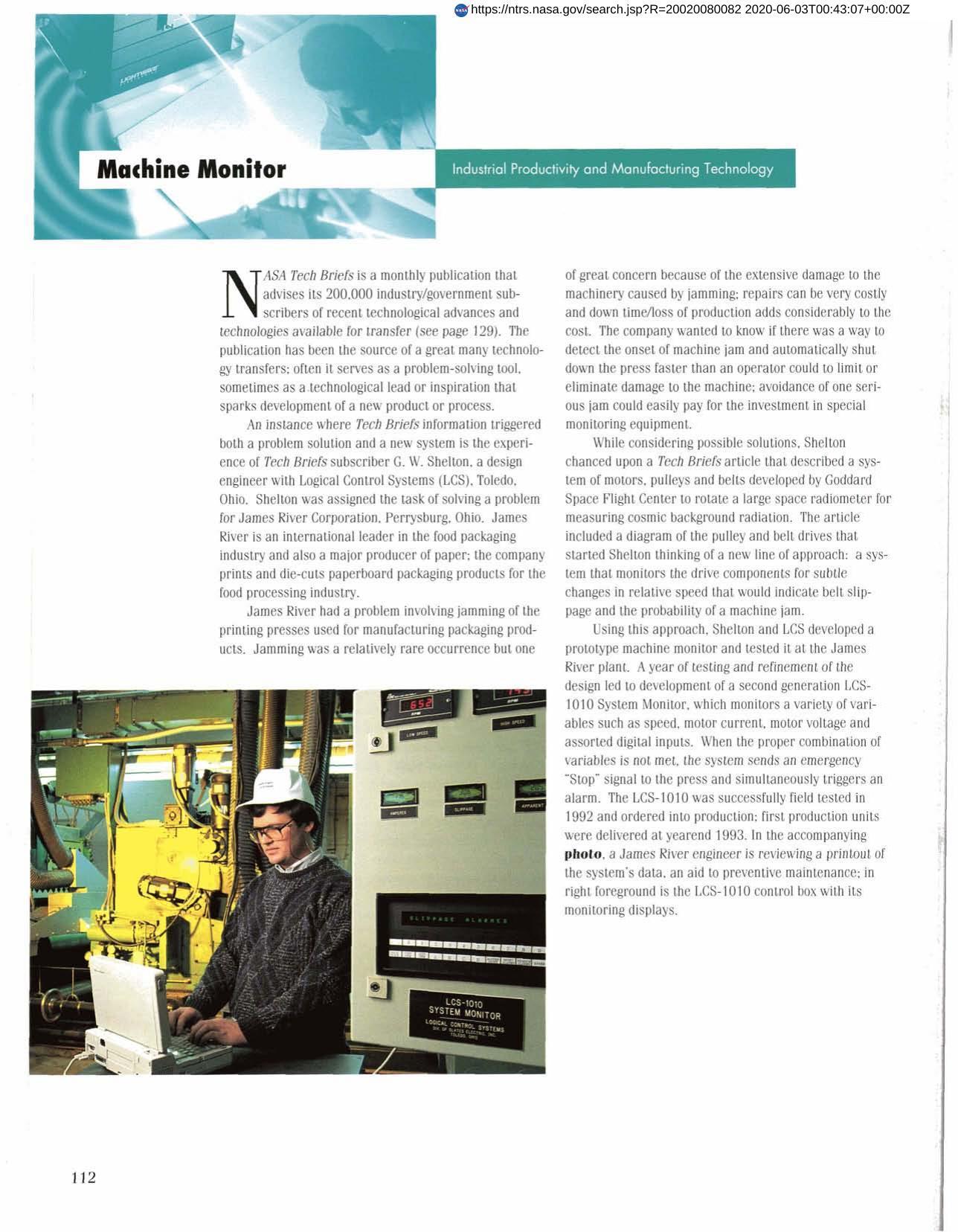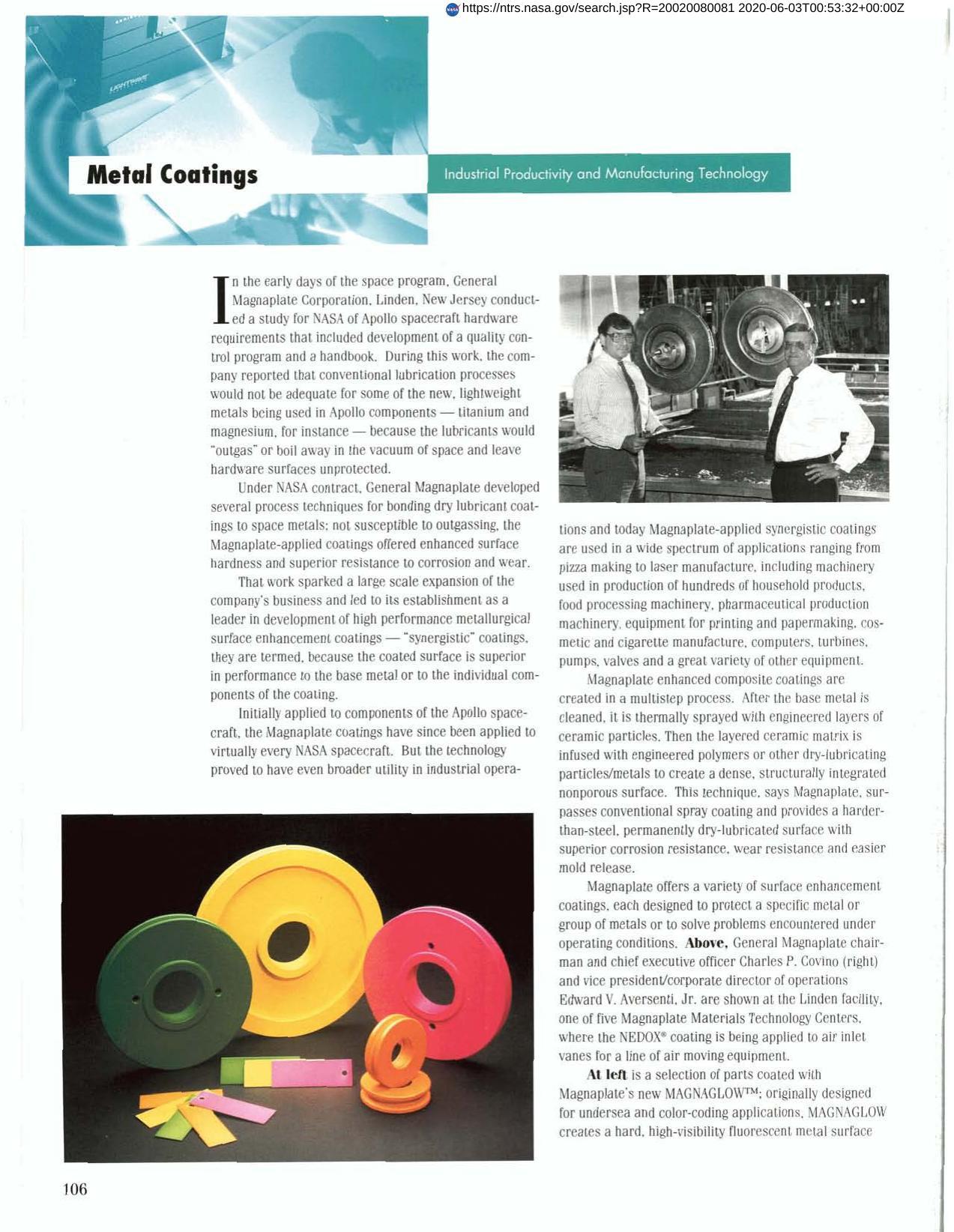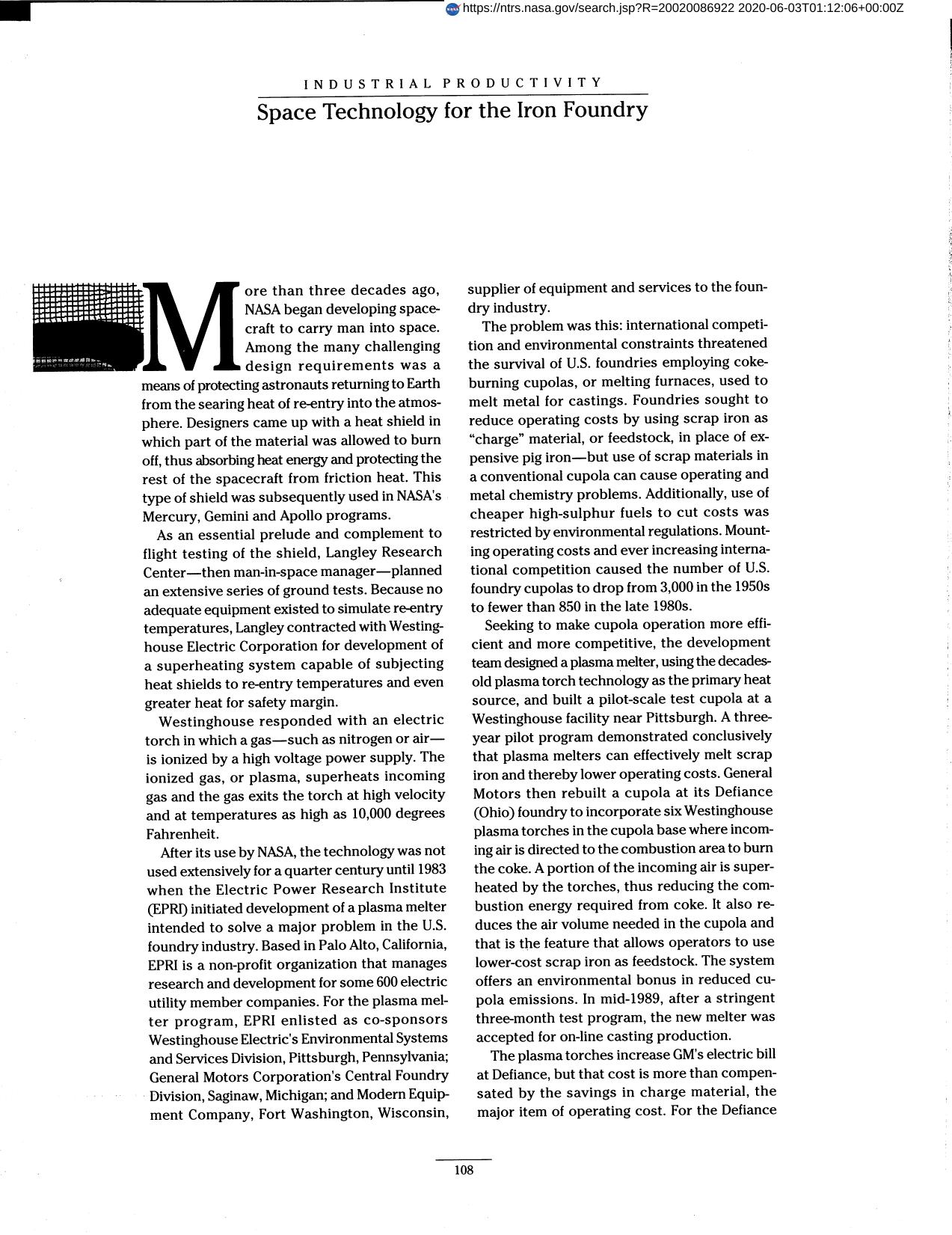
Space Technology for the Iron Foundry
Electric Power Research Institute (EPRI) initiated development of a plasma melter intended to solve a major problem in the U.S. foundry industry. EPRI is a non-profit organization that manages research and development for some 600 electric utility member companies. For the plasma melter program, EPRI enlisted as co-sponsors Westinghouse Electric's Environmental Systems and Services Division, General Motors Corporation, and Modern Equipment Company, supplier of equipment and services to the foundry industry. General Motor's plasma melter, first in the U.S., is an advanced technology system designed to improve the efficiency of coke-burning cupolas that melt iron to produce automotive castings. The key elements are six Westinghouse plasma torches. Electrically-powered plasma torch creates an ionized gas that superheats air entering the cupola to 10,000 degrees Fahrenheit. That great heat, three times higher than that attainable by oil or natural gas systems, is the key to making iron cheaper, cleaner, and faster. System offers an environmental bonus in reduced cupola emissions. Plasma torches increase GM's electric bill at Defiance, but that cost is more than compensated by the savings in charge material.
Full article: http://hdl.handle.net/hdl:2060/20020086922

Space Technology for the Iron Foundry

Space Technology for the Iron Foundry




